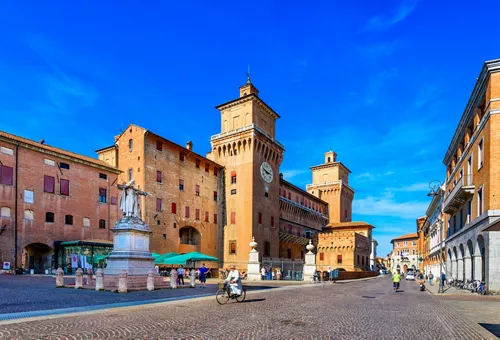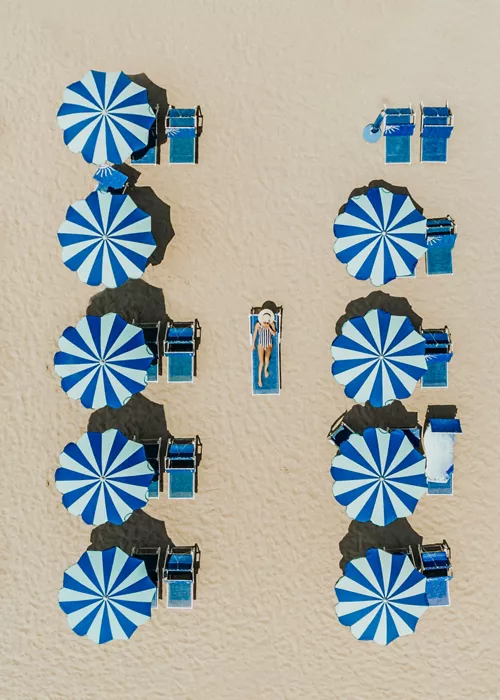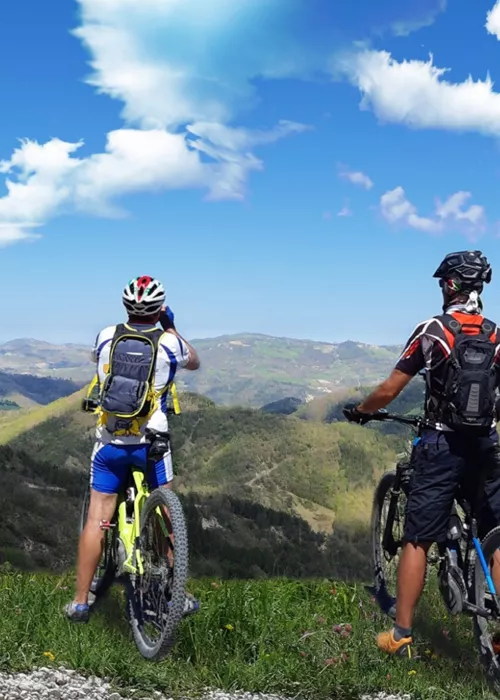3 picturesque villages in Northern Emilia
8 minutes

Of all the places we have been to, Emilia-Romagna has been one of the best. It was love at first sight, and we can’t deny it. We have highlighted 3 unique villages to visit in Emilia, the northern part of the region - Castell’Arquato, the ‘lovers village’, the authentic borgo of Guastalla, and Fontanellato with its fairytale castle on the water.
Castell'Arquato
The wonderful village of Castell’Arquato is located in the heart of the valleys near Piacenza. The well-preserved medieval old town attracts tourists every year, fascinated by this place included in the list of the most beautiful Borghi in Italy and awarded by “Bandiera Arancione del Touring Club Italiano” - Orange flag of the Italian touring club.
Top 5 things not to miss in Castell’Arquato
- Rocca Viscontea (Visconti Fortress) and the views from the top.
- Collegiata di Santa Maria Church.
- Roaming around the medieval Old town streets.
- Visiting the Luigi Ilica Museum.
- FOOD/WINE TO TRY - anolini in brodo.

What to do in Castell’Arquato
Even though Castell’Arquato is a small town, you’ll never get tired of exploring its narrow cobblestone streets and buildings within the village walls. The masterpiece of the borgo is the Rocca Viscontea fortress - there’s an exhibition offering information about the tower's history, how it was built, the many sieges it resisted, and the families ruling the area that stayed there.
Located on the highest point of Castell’Arquato, the Rocca Viscontea overlooks the surrounding valley. You can climb to the top of the tower (the entrance ticket is €5, and you can purchase it at the entrance), and from there, the view is beautiful, especially on clear days.
There’s a lot more to see throughout the village and its cobbled streets. You can't miss the Collegiata di Santa Maria Church, dating back to the 8th century, and the Palazzo del Podestà. We loved Castell’Arquato because of its picturesque corners and well-preserved features. It is known as Borgo degli Innamorati (Lovers Village), because of its romantic atmosphere. It’s not a secret that this charming borgo is often chosen as the set of many films.
Make sure you find time to visit a local locanda; one of the best is in the old town's main square, perfect for candlelight dinner and to taste local wine. We suggest booking the “Enoteca Comunale” in advance, as it’s very busy, especially during the weekends.
In the medieval town of Castell’Arquato you can also try many local specialties, the recipes of which were handed down across generations. Besides salumi (cured meats), you should also try Anolini in brodo, different from those found elsewhere in the region, made with Grana Padano and not with meat.
Don't forget to order a local Monterosso, the wine from Castell'Arquato. We personally loved to pair a fine glass of wine with a “tagliere”, a selection of local products including cheese and cured meat - prosciutto, mortadella, and culatta - served with freshly baked bread and focaccia on the side.
Castell’Arquato: Useful Information
Best time to visit: Autumn is perfect to see the stunning foliage. This season is perfect to taste local products, as when they’re at their freshest. Spring is also perfect to explore Castell’Arquato and admire the views over the valley. The gardens around the Rocca are in full bloom, and the weather is warm enough to walk around.
How to get there: The closest city is Piacenza, easy to reach from Bologna. Hop on a train from Piacenza to Fiorenzuola d’Arda, for 13 minutes, and then a taxi for just 11 minutes - it will cost about 20 euro. If you are driving, it takes about 25 minutes to reach Castell’Arquato from Piacenza.
Many people also love to enjoy cycling through this area. Emilia-Romagna offers some of the most scenic cycling routes in Italy - there’s a ciclabile (cycle path) connecting Fiorenzuola d’Arda to Castell’Arquato, about 10 km away.
Fontanellato

We found Fontanellato to be one of the most evocative villages on our trip through Emilia-Romagna. The little borgo near Parma is awarded the “Orange Flag” - Bandiera Arancione by the Italian Touring Club. What makes Fontanellato unique is definitely the wonderful Castle on the water, which looks suspended on the clouds when seen from the right angle, with the sky reflected in the moat. Fontanellato is also awarded special mentions as Slow city and Village of Arts and Culture.

Top 5 things not to miss in Fontanellato
- Rocca San Vitale
- Saletta di Diana e Atteone by Parmigianino
- Wandering between colourful houses and arcades in Via Costa
- Getting lost in Labirinto della Masone
- FOOD/WINE - Parmigiano reggiano - try different maturation times, from 12 to 40 months
What to do in Fontanellato
The only way to access the village is through the old white walls. We recommend spending at least a few days to enjoy the slow lifestyle. We woke up each morning and started the day with breakfast at a local bar, with the perfect view of Rocca San Vitale.
The old town, and all around Rocca San Vitale, is a traffic-free area, with a local market taking place every Thursday and Sunday morning, when the square is cleared from parked cars.
Rocca San Vitale, often referred to as the Castle of Fontanellato, is a fortress surrounded by water with access through a drawbridge. The building is one of the best known in the region, and nowadays it houses the local council. You can access the second floor, to see frescoes by Parmigianino. The famous local artist, whose real name is Girolamo Francesco Maria Mazzola, decorated many noble residences in the area throughout his life. In 1523, he painted the room of Diana and Atteone in the Rocca.
If you’re looking for an offbeat sight, you should consider visiting the old wash house in Fontanellato. The building dates back to the 19th century, and it is still in good shape and free to visit. The Santuario della Beata Vergine del Rosario (Sanctuary of the Blessed Virgin of the Rosary) is also worth visiting, and it’s about a 10 minutes walk from the Rocca.
About 15 minutes drive from the center of Fontanellato, you’ll find the wonderful Labirinto della Masone, with a park housing the largest maze in the world. Well hidden within the countryside near Fontanellato, the Labirinto will seriously test your orientation skills. Get lost through the wonderful and well-maintained bamboo passages, find solutions to the riddles and find the Pyramid marking the exit.
A quick tip to prevent getting lost - point your hands towards the external wall and keep going; you will (eventually) find the exit.
Fontanellato is in the province of Parma, well-known worldwide for its production of “salumi” (cured meat). We all know the famous prosciutto di Parma, but you can also find a range of products that are not usually available elsewhere - like culatello, made with a delicate cut from the pig’s hind quarters. Also, don’t forget to taste Parmigiano Reggiano - different maturation times are available, ranging from 6 to 40 months).
There is also lots of nature surrounding Fontanellato, you will find miles and miles of cultivated fields and many fresh vegetables. We tasted some of the best tomatoes, freshly picked from the vine - really delicious!
Fontanellato: Useful Information
Best time to visit: Fontanellato is a great place to visit, and a longer stay is worth planning to experience the slow pace of life. Winter is a good time to visit; Summer is fun but may be a bit busy with people from other nearby cities visiting for day trips. In fact, Autumn and Winter are the perfect time to indulge in local dishes and wines. In autumn, you should enjoy the “vino Novello”, the wine produced with the same year’s harvest.
How to get there: Fontanellato is just 25 km from Parma. Driving from Bologna takes about 1 hour and a half, close enough for a day trip. About 10 minutes outside of Fontanellato, there is Fidenza, another lovely city on the Via Francigena, with the Fidenza Village outlet perfect for shopping. We suggest a quick stop at Km90, a good place to try local dishes.
Guastalla

Imagine yourself drinking a Spritz and enjoying life in one of Emilia-Romagna’s most picturesque villages. This is what you’ll experience in Guastalla, a pretty village on the banks of the great Po river, that was probably the biggest surprise of our trip.
Top 5 things not to miss
- Palazzo Ducale and Torre Civica
- Via San Gonzaga and its shops
- Spending the afternoon at Lido Po (Riverside beach with bars and restaurants)
- Enjoying the Po River walking and cycling path
- FOOD/WINE - Cardi alla parmigiana con Tartufo
What to do in Guastalla
Guastalla is a small borgo in Reggio Emilia province, on the banks of the Po, Italy’s largest river. Palazzo Ducale is definitely the main attraction of Guastalla in terms of architecture, history and culture. Located in the center of Guastalla, it has been the seat of power for centuries, home to the powerful Gonzaga family. This beautiful palazzo is free to visit, including the upper floor, where you can admire spectacular frescoes.
After the Palazzo we explored the town center, walking down the porticos and traffic-free shopping area. The local lifestyle is fantastic, and cycling is a popular way to get around.
You will be amazed by the large square in front of the Palazzo Ducale, Piazza Giuseppe Mazzini. At the center, you’ll notice the statue of Ferrante I Gonzaga, ruler of the town in the 16th century, and on the right side, looking at the piazza, the church with the large clock and the high bell tower.
Lido Po is another place worth visiting. It’s easy to get there - walk about 15 minutes from the center of Guastalla, through a thick forest of maritime pines, breathing fresh air, until you get to the river Po, where you’ll be surrounded by nature. We recommend heading there in time for sunset, with a spritz or your favorite drink.
You can also join short cruises along the river to spot wildlife. Make sure you stick around after sunset, especially from March to October, as fun themed nights are often organized by local bars and restaurants.
Guastalla is on the border between Lombardy and Emilia-Romagna, and cuisine is influenced by the neighbouring region. There is an abundance of soups and unusual vegetables, like cardi - Guastalla’s best known specialty is “Cardi alla parmigiana con Tartufo”. In September there’s a food festival - Piante e Animali Perduti (disappearing plants and animals), with heritage and lesser-known vegetables, fruit and animal breeds. It’s a great event to learn about how food habits and cooking techniques changed over the years in this part of Italy.
Guastalla: Useful Information
Best time to visit: This part of Emilia Romagna tends to be very foggy in Autumn and Winter, especially away from the cities - but this just adds to the atmosphere. Summer is hot and humid, but the festival in September is really worth visiting. Spring is a good time to visit to see flowers in bloom and cycle around the Po river.
How to get there: You can drive to Guastalla from Reggio Emilia or Parma in about 40 minutes. You can also take the train from Parma to Guastalla, the ticket is just €3.70 and travel time is 1 hour. To get there by train from Bologna, you should change trains in Parma - total travel time should be approx 2 hours, including connection.
Article written about the experience of Toti Maisto and Alessia Vurchio - italiantripabroad.com































